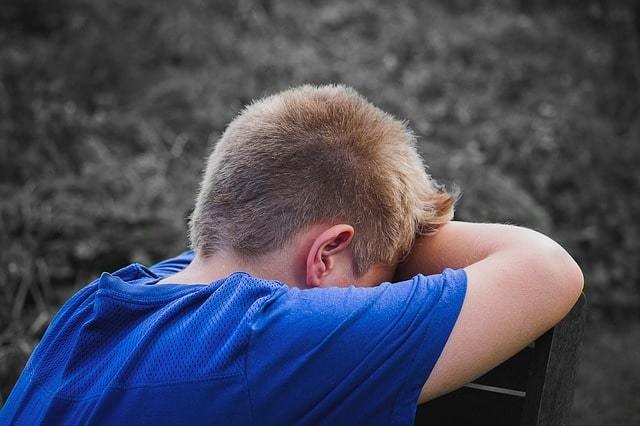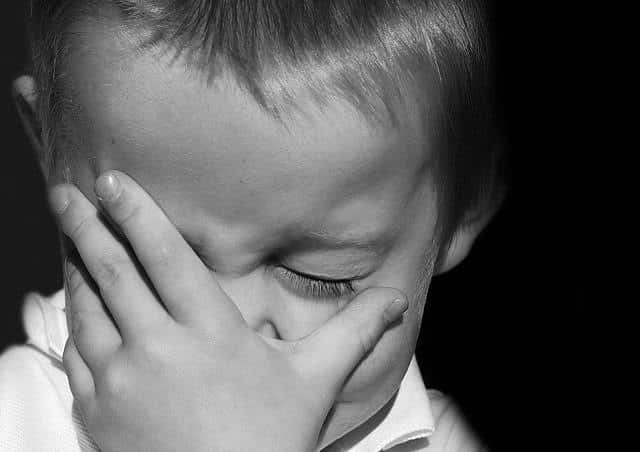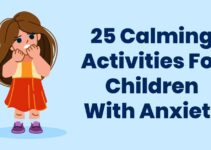It is common to see infants and toddlers upset when separated from their parent or caregiver. Separation anxiety is a normal part of emotional development. By the age of three, children usually learn to handle saying goodbyes without being overly upset about their parent leaving.
However, in some cases, separation anxiety can cause extreme distress that interferes with a child’s everyday functioning. It is then that we start thinking about a more serious condition — separation anxiety disorder.
Table of Contents
- What is separation anxiety disorder?
- How can you tell the difference between normal separation anxiety and separation anxiety disorder?
- What are the signs of separation anxiety disorder?
- What are some of the risk factors for separation anxiety disorder?
- How Is Separation Anxiety Disorder Diagnosed?
- What are some co-occurring conditions?
- What can parents do to prevent separation anxiety disorder?
- What Is the treatment for separation anxiety disorder?
- What is my role as a parent in the treatment?
- What is the prognosis for separation anxiety disorder?
What is separation anxiety disorder?
Separation anxiety disorder is a condition in which the anxiety around separation seems too much for a child to bear. In separation anxiety disorder, the intensity of fear is so overwhelming that it interferes with normal activities.
We notice that a child’s daily functioning is seriously affected by the persistence of fear. A child with separation anxiety disorder will do everything they can to avoid you leaving and will show distress at the smallest sign that you may go away.
How can you tell the difference between normal separation anxiety and separation anxiety disorder?
Since both have similar symptoms, it is sometimes confusing for a parent to know when normal separation anxiety becomes a disorder. However, there are some indicators that help us distinguish the difference between the two.
The intensity and severity of symptoms
In cases of separation anxiety disorder, symptoms interfere with most everyday activities. Anxiety seems to be exaggerated and unbearable.
For example, a child may start to panic the moment you are out of the sight, start feeling physically sick at the thought of you leaving, or refuse to be anywhere without you. A perceived threat from being separated from parents is very persistent and intense.
Child’s age
Most children learn how to cope with a parent or caregiver leaving by the age of three. Of course, there will always be some exceptions, but in most cases, children know how to survive separation successfully.
For children with separation anxiety disorder, the feelings of fear continue to re-emerge after age three and in most everyday situations.
What are the signs of separation anxiety disorder?
Separation anxiety disorder is characterized by multiple symptoms that continue to persist in a child’s life in such intensity that they interfere with overall functioning.
The signs include:
- Intense fear that something terrible will happen to a person they are attached to. For example, that mom or dad are going to get seriously hurt or ill.
- Worry that they will not be reunited. A child fears the unpredictable reasons which may lead to a parent not coming back.
- Difficulties falling asleep. They may insist to sleep with you because they are afraid of sleeping alone. They may also have nightmares about you leaving or something bad happening to you or them in your absence.
- School refusal. A child does everything they can to stay at home because school feels like a threatening place.
- Bed wetting.
- Psychosomatic symptoms — headache, nausea, stomachache — in the face of separation. The symptoms are reminiscent of panic attacks.
- Agitation at the thought of a parent leaving. Just the notion of a parent leaving can cause them to be overwhelmed.
- They tend to cling to a parent. A child follows a parent around, clings to them, holds their hand, or has difficulty being physically separated from you.
An example of a 5-year-old girl with separation anxiety disorder
Meet Jane, a 5-year-old girl with separation anxiety disorder. Jane is constantly afraid that something bad will happen to her parents, which is why she doesn’t let them leave her sight.
When she feels that they are preparing to leave, the fear overwhelms her enough to cause physical pain in her chest and stomach. She drops whatever she has been distracted with up to that point and focuses only on where her parents are.
Jane doesn’t like to go places and visit other people. Whenever the family is getting ready to leave the house, Jane ends up crying in panic, usually to the point of exhaustion.
Jane’s parents thought that allowing her time to mentally prepare for leaving would be better, so they let her know about the family plans a few days ahead. Even if the initial reaction seems encouraging for her parents, Jane would plan ways which could stop them from leaving.
Sometimes, she would pretend to be physically sick so they wouldn’t leave. Sometimes, Jane really is physically sick because of the anxiety. For her parents, trying to differentiate between the two is very tiring and worrisome.
Jane’s parents feel like they always need to be around her. They cannot plan on anything without worrying what Jane’s reaction will be. Jane is having trouble falling asleep on her own.
She insists on sleeping with her mom, which is why her dad usually sleeps on the couch. When they see how scared she looks, they find it hard to say “no.”
Anxiety affects her ability to focus, which is why her parents feel like she’s not learning as much as other kids her age.
Having friends over is the only way they can organize some social time for her. Jane knows that her parents want her to not be scared. She’s old enough to understand that they hope she’ll get distracted by playing and forget about them.
However, Jane seems to be the only child that actually stops playing to check where her parents are or to physically approach them. This happens more when they are out, so they try to organize things at home.
Jane is starting school next year. Her parents are very concerned about the transition. They sometimes feel as if she’s still that one-year-old baby that can’t let her parents leave her sight for more than five seconds.
What are some of the risk factors for separation anxiety disorder?
We have already mentioned some of the factors that can prolong the feeling of separation anxiety. Those factors can also affect the severity of the fear.
Let’s look at them in more detail:
– Parent behavior towards children
There’s research that shows that parent intrusiveness —taking over tasks that children are or could be doing on their own — increases child dependence on parents/caregivers. This affects the intensity of separation anxiety. [1]
Parents can also be quite anxious when apart from their children, which they can show in different ways — through various non-verbal cues that children use as indicators of danger. For example, they might hold on to their child longer when saying goodbye or change their tone of voice.
– The nature of the relationship between a child and their parent/caregiver (attachment)
A child may feel a parent is not a reliable figure to be attached to, because they leave even when the child doesn’t want them to. The insecure attachment may induce feelings of anxiety. [2]
– Life events that happen before or during the first experiences with separation
These may include the birth of a sibling, change in surroundings (moving to a new place), tension at home, a parent/caregiver being away, etc.
– Individual development – cognitive and socio-emotional development and physical health
A child may have certain delays in their cognitive and socio-emotional development that make communicating to others and adapting to a new environment very challenging.
For example, children with autism or dysphasia can have more intense and prolonged symptoms of separation anxiety, due to their challenges connecting and communicating with other people.
For some kids, physical fragility can affect emotional fragility, especially if this is combined with parents’ overprotection. Examples of such fragility are difficulties with hearing or vision, asthma, diabetes, epilepsy, and heart problems.
– Genetics
When it comes to mental health, it is always important to consider a history of mental disorders in the family which may indicate a higher vulnerability.
How Is Separation Anxiety Disorder Diagnosed?
Professionals, such as psychiatrists and psychologists, use various assessments and interview methods to evaluate a child for separation anxiety disorder. As for any other mental disorders, a licensed professional is diagnosing based on diagnostic criteria (signs and symptoms) found in the Diagnostic and Statistical Manual of Mental Disorders V (DSM-V).
Before any psychological evaluation is done, a clinician must ensure that there are no organic factors inducing the feeling of anxiety. For this reason, a clinician is likely to first do a thorough physical exam.
What are some co-occurring conditions?

Research conducted after the World Trade Center attack in 2001 showed that around 12.3 percent of children in New York public schools (sample of 8,236) suffered from probable separation anxiety disorder, which was highly comorbid with potential PTSD. [3]
It’s also important to distinguish separation anxiety disorder from other types of anxiety disorders, such as social phobia, generalized anxiety disorder, social phobia, or other specific phobias.
Social phobia, for example, is an intense fear of social situations in which a child can be humiliated or embarrassed. With social phobia, the fear is not related to separation, but of situations that include other people.
Generalized Anxiety Disorder is characterized by excessive worrying about a number of events —past, present, and future — and in various contexts — home, school, friends, family, etc. The fear overpasses the separation.
According to a study, school refusal is reported in about 75 percent of children diagnosed with separation anxiety disorder. Also, separation anxiety disorder is reported to occur in up to 80 percent of children with school refusal. [4]
What can parents do to prevent separation anxiety disorder?
There’s no proven way to prevent separation anxiety disorder, but there are some suggestions that may be helpful.
Separation anxiety is, as already mentioned, a normal part of emotional development. Helping your child cope with it successfully can help prevent anxiety symptoms becoming more intense and interfering with daily functioning.
You can find suggestions on how to help cope with separation anxiety here (article #1)
Remember that your readiness to reach out for help is very important. This is why we are adding two more suggestions:
- Do not wait for the symptoms to worsen, talk to a professional.
Reach out the moment you feel your regular strategies in handling separation anxiety are not working. If you see that your child is having more difficulties than most kids their age, if the anxiety is interfering with daily activities, or if you feel overwhelmed with the level of pressure to handle your child’s anxiety, talk to a mental health professional.
Bear in mind that early diagnosis and treatment are important in reducing the intensity and severity of symptoms.
- If you are suffering from anxiety or depression, or are struggling to cope with stress, reach out.
You can’t pour from an empty cup. Parenting takes patience and dedication ‑ it’s not easy. If you are having concerns about your own mental health, find a therapist to talk to. A therapist can help you work through your own challenges so that you feel stronger and ready to handle your child’s anxiety.
If you are hesitant to start therapy, reach out to people you trust and share with them. Building a support system around you that can assist you in difficult times can make a big difference.
What Is the treatment for separation anxiety disorder?
Depending on the severity of symptoms, psychotherapy, medication, or both may be recommended.
In most cases, the primary choice of treating separation anxiety disorder is psychotherapy. Psychotherapists work with a child and a family on alleviating the severity of symptoms by helping the relationship between the parent/caregiver and the child improve, through learning coping mechanisms and slowly introducing experiences through which a child develops a sense of security.
Medication that is added in treatment often includes antidepressants or anti-anxiety medication. These are the cases in which anxiety is too intense to be handled just therapeutically.
What is my role as a parent in the treatment?

Dealing with a separation anxiety disorder is not easy for parents. However, it is necessary that you stick to the recommended treatment. Treatment can include you having to change some of your behaviors and habits, too. Your openness to change can affect the process in a positive way.
Parents can often feel it’s their fault that their child is suffering. They burden themselves with such guilt that it causes more anxiety in their parenting. It’s important to address this feeling. Parenting is not easy and no one knows all the answers.
Instead of blaming yourself, try learning from your experiences (with professional help, if needed) and work towards changing habits for the future. This is the best way you can help your child learn and grow, and cope effectively with anxiety.
What is the prognosis for separation anxiety disorder?
Lifetime prevalence estimates of childhood separation anxiety are around 4 percent. Research says that approximately one-third of people who suffered from separation anxiety disorder in childhood (around 36 percent) suffered mental health issues in adulthood. [5]
This may sound scary to most parents. However, there are a few factors that influence the prognosis for separation anxiety disorder that we must take into consideration — such as the severity of symptoms, the age of a child, the nature of the child’s support system, and the life occurrences in the child’s life.
With early diagnosis and proper treatment, you will maximize your child’s ability to cope with their anxiety and develop a sense of security.
- Wood, J. J. (2006). Parental intrusiveness and children’s separation anxiety in a clinical sample. Child Psychiatry and Human Development, 37(1), 73-87.
- Milos, M. E., & Reiss, S. (1982). Effects of three play conditions on separation anxiety in young children. Journal of Consulting and Clinical Psychology, 50(3), 389.
- Hoven, C. W., Duarte, C. S., Wu, P., Erickson, E. A., Musa, G. J., & Mandell, D. J. (2004). Exposure to trauma and separation anxiety in children after the WTC attack. Applied Developmental Science, 8(4), 172-183.
- Masi, G., Mucci, M., & Millepiedi, S. (2001). Separation anxiety disorder in children and adolescents. CNS drugs, 15(2), 93-104.
- Shear, K., Jin, R., Ruscio, A. M., Walters, E. E., & Kessler, R. C. (2006). Prevalence and correlates of estimated DSM-IV child and adult separation anxiety disorder in the National Comorbidity Survey Replication. American Journal of Psychiatry, 163(6), 1074-1083.










